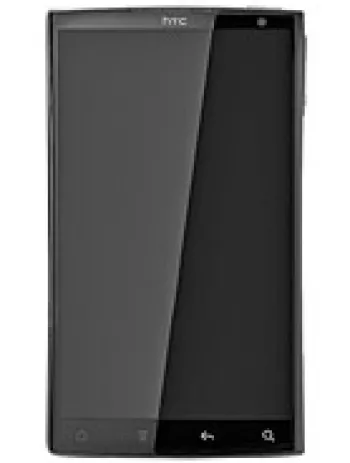
HTC Touch 3G Overview
The HTC Touch 3G was launched in late 2008 as part of HTC’s Touch series, aimed at providing a touch-friendly experience in a compact form factor. Categorized as a mid-range smartphone during its time, the HTC Touch 3G was designed to cater to users seeking efficient mobile connectivity and advanced features without compromising on design and usability.
Design and Build
The HTC Touch 3G had dimensions of 102 x 53.6 x 14.5 mm and weighed around 96 grams. Its compact size and lightweight build made it easy to carry and use with one hand. The device featured a mini-SIM slot, appealing to users who were accustomed to using standard-sized SIM cards. The phone was initially available in four distinct colors: Sophisticated Black, Noble Gold, Sparkle Blue, and Modern Brown, offering users a range of options to suit their personal style.
Display
The HTC Touch 3G was equipped with a 2.8-inch TFT resistive touchscreen. Although the screen size was modest, it was sufficient for the phone’s intended functionalities. The display supported 65K colors with a resolution of 240 x 320 pixels and a pixel density of approximately 143 pixels per inch, providing clear and vibrant visuals for its time. While the resistive touchscreen was not as responsive as capacitive variants, it allowed for precise stylus input, which was common for phones in this era.
Hardware and Performance
Under the hood, the HTC Touch 3G ran on a Qualcomm MSM7225 Snapdragon S1 chipset, featuring a 528 MHz ARM 11 processor. While these specifications may seem basic by today's standards, they were capable of handling the mobile operating system and applications of the time adequately. The phone came with 192MB of RAM and 256MB of internal ROM, along with a dedicated microSD card slot supporting expandable storage, which helped mitigate the limited onboard memory.
Operating System
The HTC Touch 3G was operated by Microsoft Windows Mobile 6.1 Professional, which was designed to offer a PC-like experience on mobile devices. This OS allowed users to manage their emails, calendar, and documents efficiently while providing access to the Windows Mobile marketplace for additional applications. Although it didn’t have a dedicated GPU, the device was recognized for delivering a reasonable performance for productivity tasks.
Camera
The phone featured a single 3.15-megapixel rear camera, capable of recording video as well. Whilst the camera specification might seem minimal by contemporary standards, it was suitable for casual photography and quick captures. The device did not come with a front-facing camera, which was typical for smartphones in that period.
Connectivity
The HTC Touch 3G supported GSM and HSPA technologies, with 2G bands covering GSM 850, 900, 1800, and 1900 frequencies, and 3G bands covering HSDPA 900 and 2100 frequencies. The phone could achieve data speeds up to 7.2 Mbps on HSPA networks. The device came with Wi-Fi 802.11 b/g, Bluetooth 2.0 with A2DP, GPS with A-GPS, and a miniUSB interface for connectivity and charging. However, it lacked FM radio and a 3.5mm headphone jack, which meant relying on Bluetooth for audio connectivity.
Battery Life
The phone was powered by a removable 1100 mAh Li-Ion battery, which offered a standby time of up to 450 hours and talk time of up to 6 hours and 30 minutes. The battery life, while less impressive today, met the demands of users during its release, allowing for extended usage cycles especially for communication and basic internet browsing.
User Interface
HTC's proprietary TouchFLO interface was integrated with Windows Mobile, providing a more finger-friendly navigation experience. This interface facilitated easy access to essential functions and a smoother touchscreen interaction, which was an influential feature in touch-based phone design.
Market Reception and Legacy
The HTC Touch 3G was launched with a market price of approximately 200 EUR, positioning it as an affordable device for users seeking advanced connectivity and productivity capabilities in a compact form. While it did not achieve groundbreaking success, it contributed to HTC’s reputation as a manufacturer of innovative smartphones in the pre-Android era. The device’s design and functionality laid groundwork that influenced HTC's later introductions in the rapidly evolving smartphone industry.
Main Features of HTC Touch 3G
- Compact and lightweight design: 102 x 53.6 x 14.5 mm, 96 g
- Supports both GSM and HSPA technologies for improved connectivity
- 2.8-inch TFT resistive touchscreen with 240 x 320 pixel resolution
- Powered by Microsoft Windows Mobile 6.1 Professional OS
- Powered by Qualcomm MSM7225 Snapdragon S1 chipset with a 528 MHz ARM 11 CPU
- Expandable memory via microSD card slot
- 3.15 MP main camera with video recording capabilities
- Wi-Fi 802.11 b/g and Bluetooth 2.0 with A2DP for wireless connectivity
- Integrated GPS with A-GPS support
- Removable Li-Ion 1100 mAh battery providing up to 450 hours standby and up to 6.5 hours talk time
- Available in four stylish colors: Sophisticated black, Noble gold, Sparkle blue, Modern brown
Drawbacks of HTC Touch 3G
- Outdated operating system (Microsoft Windows Mobile 6.1 Professional)
- Resistive touchscreen technology is less responsive compared to modern capacitive screens
- Low screen resolution and pixel density (~143 ppi) by today's standards
- No GPU present, limiting graphic performance
- No front-facing camera for selfies or video calls
- Lack of 3.5mm headphone jack
- No radio feature available
- Limited internal memory (192MB RAM, 256MB ROM)
- Discontinued model with potentially limited support and parts availability



View Also
More Phones
All Rights Reserved +14266 Phones © Mobilawy 2025

























